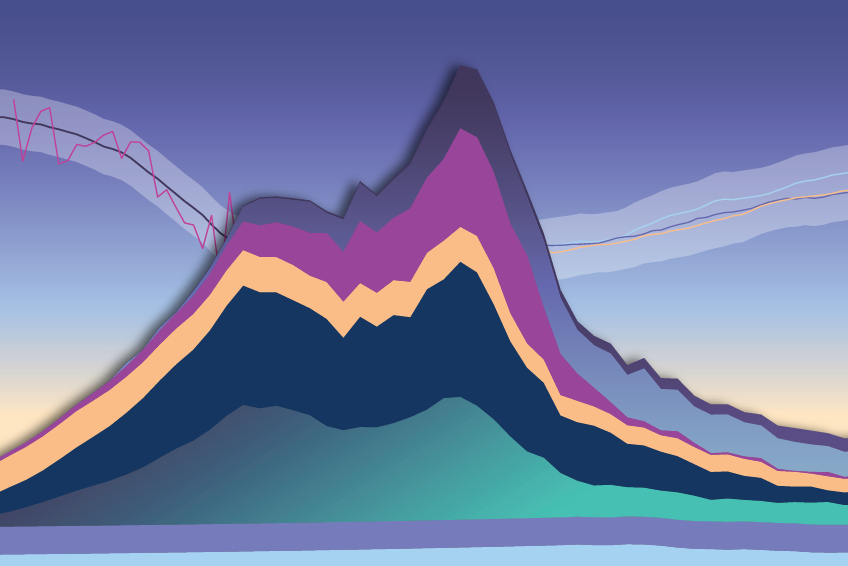Scientific Assessment 2022: TFA Summary
The Scientific Assessment 2022 Report in its Executive Summary and Chapter summaries provides its current conclusions for trifluoroacetic acid (TFA) emissions and environmental effects. Some conclusions are reproduced below, along with an indication of their location within the Report (available here).

World Meteorological Organization (WMO). Executive Summary. Scientific Assessment of Ozone Depletion: 2022, GAW Report No. 278, 56 pp.; WMO: Geneva, 2022.
The formation in the atmosphere of TFA is expected to rise in the coming decades due to increased use of HFOs and HCFOs. TFA, a breakdown product of some HFCs, HCFCs, HFOs and HCFOs, is a persistent chemical with potential harmful effects on animals, plants, and humans. The concentration of TFA in rainwater and ocean water is, in general, significantly below known toxicity limits at present. Potential environmental impacts of TFA require future evaluation due to its persistence. (Executive Summary). See explanatory note 1.
Some HFCs and unsaturated HFCs (hydrofluoroolefins [HFOs]) degrade in the environment to produce TFA, a persistent toxic chemical [see explanatory note 2]. HFO-1234yf has been increasingly used to replace HFC-134a as a mobile air conditioner (MAC) refrigerant. Measurements show that atmospheric background abundances of HFO-1234yf at Jungfraujoch, Switzerland, have grown from less than 0.01 ppt before 2016 to annual median levels of 0.10 ppt in 2020. At the 2020 level, the oxidation of HFO-1234yf is likely producing a comparable, or potentially larger, amount of TFA than the oxidation of HFC-134a locally near Jungfraujoch. The measured and model simulated concentrations of TFA from the use of HFO-1234yf and other relevant HFOs, HFCs, HCFCs, and hydrochlorofluoroolefins (HCFOs) is, in general, significantly below known toxicity limits at present. However, the production of TFA in the atmosphere is expected to grow due to increased use of HFOs and HCFOs. Potential environmental impacts of TFA require future evaluation due to its persistence. (Chapter 2: HFCs).
Since the 2018 Assessment, there have been new global 3-D chemical transport modelling studies to assess TFA formation in hypothetical scenarios in which refrigerants in all MACs in existence today were assumed to contain solely HFO-1234yf. These studies estimated TFA formation and deposition in the USA, Europe, China, India, and the Middle East. In these studies, the global total deposition of TFA produced from HFO-1234yf degradation was estimated to be approximately 60 Gg yr–1. The model-simulated annual total TFA deposition rates were 7.5 Gg yr–1 in the USA, 5.9 Gg yr–1 in the EU, 19–24 Gg yr–1 in China, 12–21 Gg yr–1 in India, and 10–19 Gg yr–1 in the Middle East. The simulated TFA rainwater concentrations show large variation, but the regional mean concentrations were below the “no observable effect” concentration for most of the areas around the globe, suggesting that the environmental impacts are insignificant. In some parts of North Africa and the Middle East where precipitation is scarce, simulated TFA rainwater concentrations exceeded the no-effect level for the most sensitive algae (1.2 x 105 ng L–1). However, this finding is based on a single model study, and there are large uncertainties in model-calculated precipitation amounts and TFA rainwater concentrations in regions with very low precipitation. (Chapter 2: HFCs).
TFA, which is produced in the atmosphere from the degradation of HFCs, HCFCs, HFOs, and HCFOs, is not expected to harm the environment over the next few decades, although some regional concerns have been raised; periodic evaluation of this assessment is suggested, as important gaps in our understanding remain. This assessment is based on updated estimates of the TFA formation from current atmospheric concentrations of HFCs and HCFCs (hydrochlorofluorocarbons) and their projected decline, as well as the expected increasing abundance of HFOs as HFC and HCFC replacements within the next years. With long-lived HFCs being replaced with high-TFA-producing, short-lived HFOs, more TFA will be formed in the atmosphere. Because of the shorter lifetime of HFOs, this TFA is expected to be deposited nearer to the location of emissions. Other anthropogenic sources of TFA, such as the incineration of polytetrafluoroethene (PTFE), could also contribute. In view of changing and potential unknown sources, concentrations of TFA should be monitored for changes in different parts of the environment, with a special focus on highly populated regions and on the remote ocean. (Chapter 7: Scenarios and Information for Policymakers).
More information about TFA is available on the EFCTC website.
Explanatory note 1. There are other sources of TFA. The Environmental Effects Assessment Panel (EEAP) 2020 Summary Update 2020 for Policymakers commented that for TFA, an unknown amount originates from fugitive emissions from chemical manufacture, waste disposal sites, laboratory use, and degradation of pharmaceuticals, pesticides, and industrial chemicals containing the trifluoromethyl group. Available at Environmental Effects Assessment Panel (EEAP) | Ozone Secretariat (unep.org)
Explanatory note 2. Though trifluoroacetic acid fulfils the criteria for persistency, the available data indicate that it is neither fulfilling the criteria for toxic or bioaccumulative (PBT-substances), nor the criteria for very bioaccumulative substances (vPvB-substances) according to REACH directive, Annex XIII and as laid down in the TGD R.11 of the European Chemicals Agency (ECHA). Based on its robust dataset, TFA does not meet the criteria for acute or chronic aquatic toxicity classification according to the CLP and UN-GHS systems.